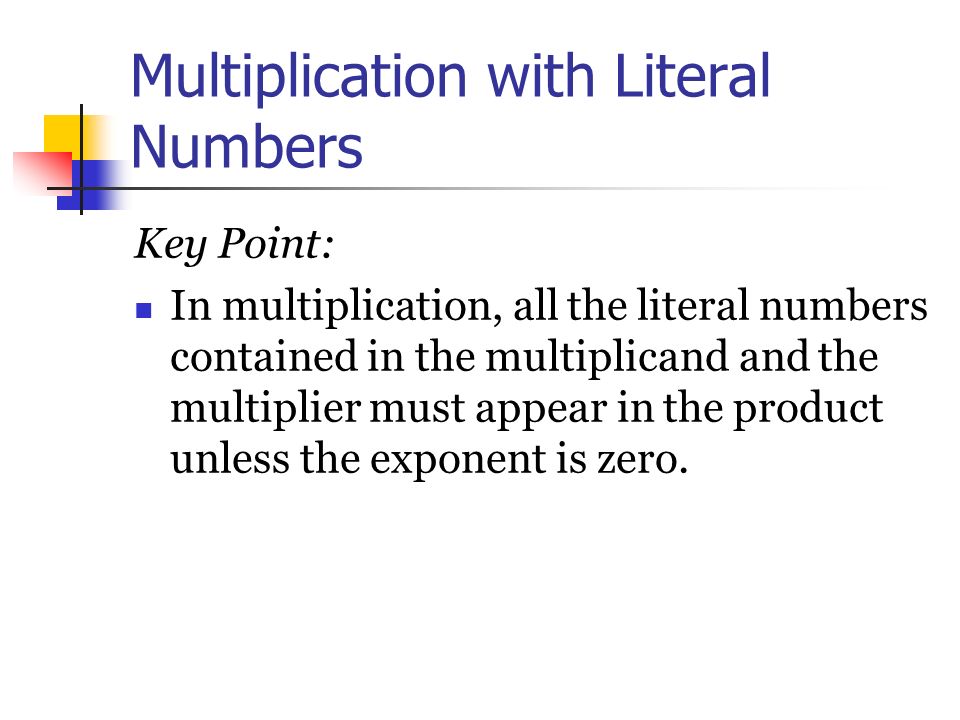Multiplication of Literals
The process of multiplying literals is identical to the operation of multiplying integers. Multiplication was learned in arithmetic as repeated addition.
For instance, 4 + 4 + 4 + 4 is referred to as 4 times 4 and is written as 4 x 5.
Similarly, if an is a literal, p + p + p + p equals 4p and is denoted by the symbol 4p.
Occasionally, the multiplication symbol is mistaken with the letter x. To prevent such misunderstanding, we remove the sign of multiplication when a number is multiplied by a literal or when two literals are multiplied by a number.
Thus, if there is no symbol between a literal and the sum of two literals, it is understood that the two have been multiplied.
Therefore, a + a + a + a + a = 5 x a = 5a
Likewise, the product of the literals a and b is denoted by ab.
It is worth noting that the type y 4 product is not written as y4. Traditionally, it is spelled as 4y.
# Examples of Literal Multiplication
1. Write the following sentences using numbers, literals, and addition, subtraction, and multiplication operations:
1. 5 times a
Ans: 5a
2. a times b
Ans: ab
3. x times 10
Ans: 10x
4. The product of x and y.
Ans: xy
5. 7 times a added to b.
Ans: 7a + b
6. a times b added to 4.
Answer: ab + 4
7. 10 times the sum of x and y.
Ans: 10(x + y )
8. 10 times a is subtract from a
Ans: b – 10a.
9. p times q is subtract from 10
Ans: 10 – pq.
10. 200 more than twice a number y.
Ans: 200+2y
11. Thrice a number
Ans. y = 3y.
12. A number is 10 more than thrice a number
Ans. y = 3y + 10
13. 10 times x added to y .
Ans: 10x + y
14. p times q added to 5 .
Ans: pq + 5
15. 10 times the sum of a and b.
Ans: 10(a + b )
16. a times the sum of 15 and b.
Ans: a(15 + b)
17. 15 times p is subtract from q
Ans: q – 15p.
18. p times q is subtract from 20
Ans: 20 – pq.
Commutative, Associative, and identity properties
The characteristics of literal multiplication are given below.
1. Commutative property:
Commutativity states that for any two literals a and b, ab = ba.
Thus, literal multiplication is commutative.
2. Associativity property:
Consider any three literals a, b, or c, we have,
(a x b ) x c = a x (b x c)
Thus, literal multiplication is associative.
3. Identity: Consider a literal P
P x 1 = 1 x P
In this case, '1' is referred to as the multiplication identity.
4. Distributive carried out on multiplication and addition: Consider any three literals p,q, and r.
p x (q + r) = pq + pr


